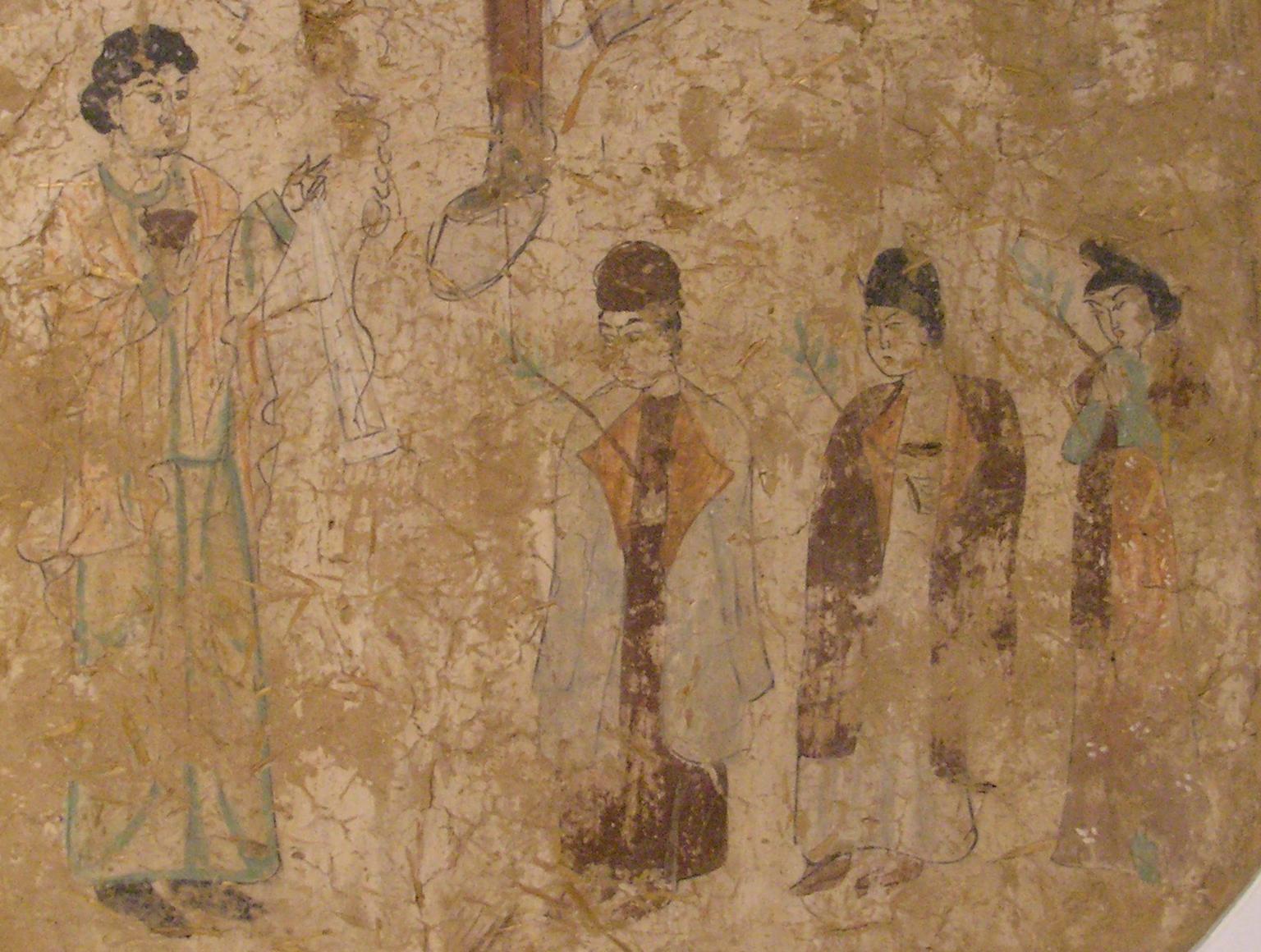
Shop Amazon - Create an Amazon Baby Registry
Wall Paintings from a Christian Temple, Chotscho, Tarim Basin

Picture source: Chotscho by Albert von Le Coq


Translated from the German:
[This paragraph is the evidence for this being a Christian temple.]
The whole building was evacuated and the bare walls on which the firm smooth plaster still clung promised not to yield. Only when some of the newer walls were removed, we found remains of wall paintings. On the north wall of the east hall at X was recognized, however very indistinct, the figure of a horseman (the photograph was not able to reproduce it), over the right shoulder he bore a flagpole terminating in a cross. The assumption that this must be a Christian representation has been since severely shaken by the appearance of the same cross on a very badly damaged Manichaean painting, but has gained by the lack of white Manichean garments in the pictures again to likelihood.
...
[The description of the image shown above.]
In the middle of the upper part of the image shows the two front feet of a brown horse. Before the horse stands on the left side of the image a large male figure of unusual type. Surrounded by black curls, the head recalls late antique representations. His costume consists of a green robe reaching to the feet. Over this a broad, wrinkled, red outer garment is worn. Apparently, the painter, (as you can often observe), first envisioned the green robe, and only then put the outer garment over it: so that, as the colour of the red garment gradually crumbled, among this the green was able to emerge again. The inelegantly subscribed feet are covered with coarse black shoes. In his left hand he brandishes a golden (yellow) censer, the shape of this recurs nowhere in the wall paintings and miniatures. The smoke is represented by a briskly upwardly mobile, wavy line that dissolves up in spirals. In his right hand he carries a black, shell-like object that we may perhaps explain as a holy-water-vessel.
Of the three people in front of him, the first two are likely to be men, the third, on the right, however is a woman. All carry a leafy branch, the costume is strange and, if we exclude that of the woman, occurs again on none of our wall or silk paintings from Chotscho. It consists of a long, plain skirt, brown for the foremost man, for the second gray-blue, and seemingly is worn without a belt. Additionally, however - and this part of the costume is strange - hangs a collarless, long-sleeve jacket apparently, loosely thrown over the shoulders, down to his knees. It is blue gray for the first figure, brown in the second, both of which are fabrics with a red lining, which is visible on the large, triangular lapels of both coats. The first of the male figures wears a brown turban-like headdress on his head, his black hair is visible behind his left ear. The second male figure (the middle of the group), however, appears to have put on a great, frustoconical cap made of black fabric, on the feet they both wear brownish shoes.
Finally, the right hand female figure is clothed in a short, long-sleeved, green jacket reaching only to the middle of the upper body and a very long, dress skirt covering the feet, a brown scarf or shawl apparently thrown over loosely the right half of the body from shoulder up to about half of the thigh, and the left shoulder to the chest.
The thick black hair is placed on the apex of a spherical structure, and appears to form a strong bulge in the neck. The hairstyle and a similar costume occurs once before (on Plate 44).
Since the Manichean clergy at ritual activities most certainly always served in white Manichaean vestments, it is likely that we have here a representation of a Christian church before us. Unfortunately, we lack in this case the invaluable assistance that the manuscripts found in other places give us: the ruin has not yielded a unique marking on their walls and not a single manuscript from their little debris.